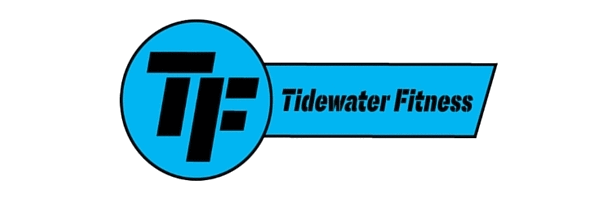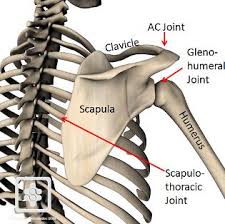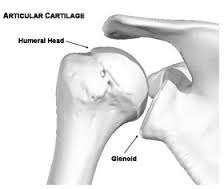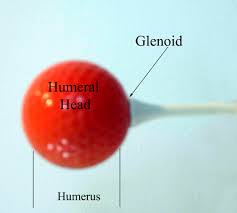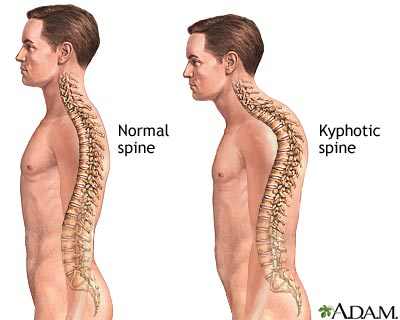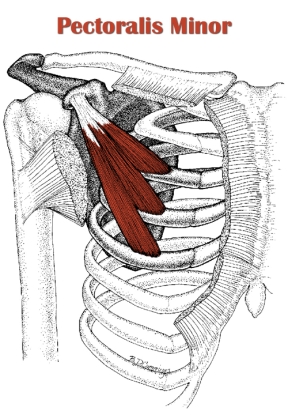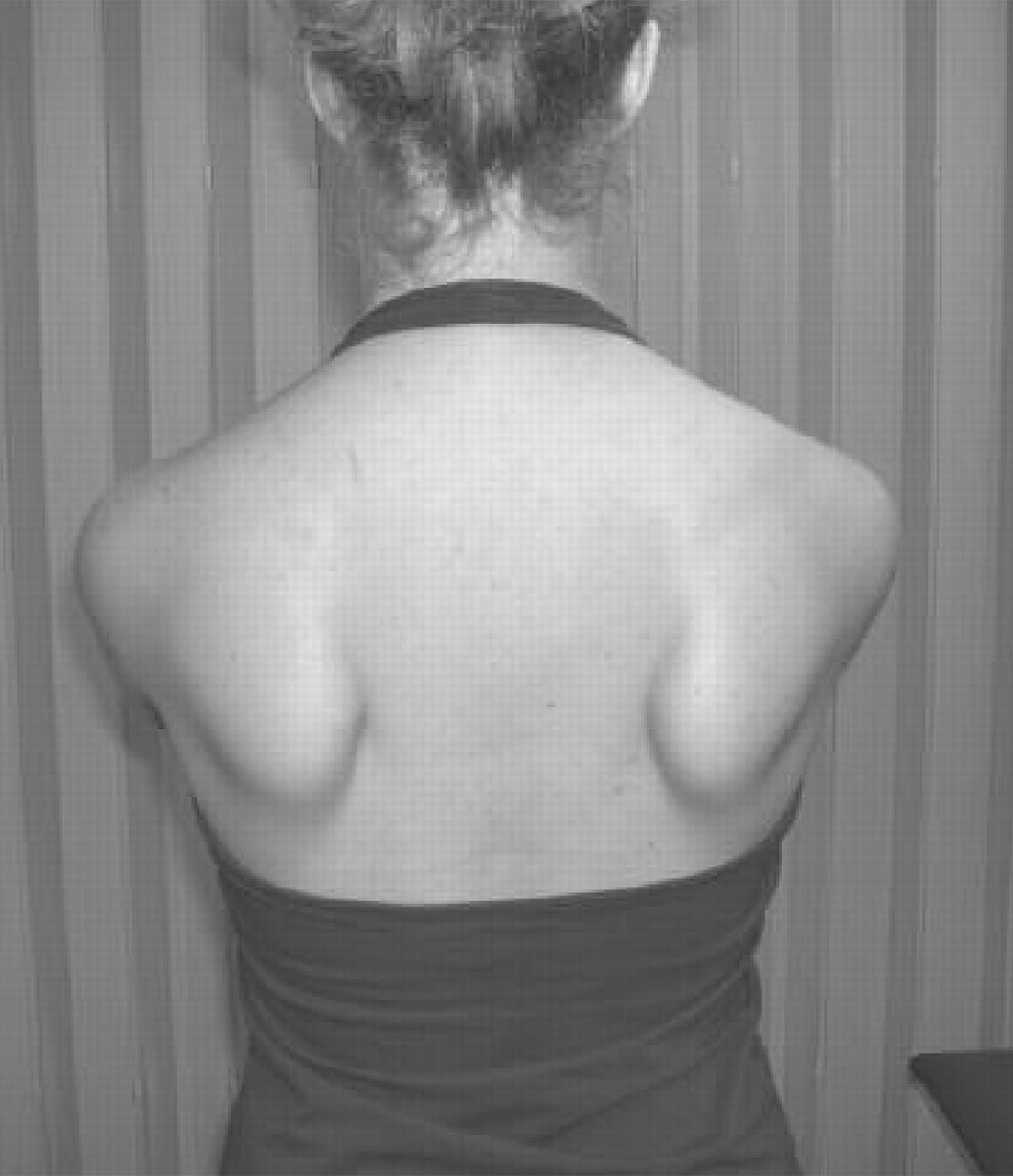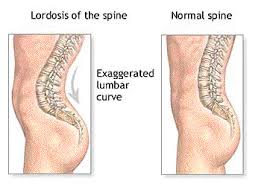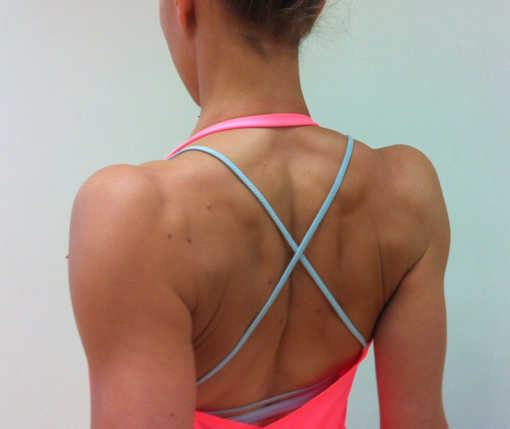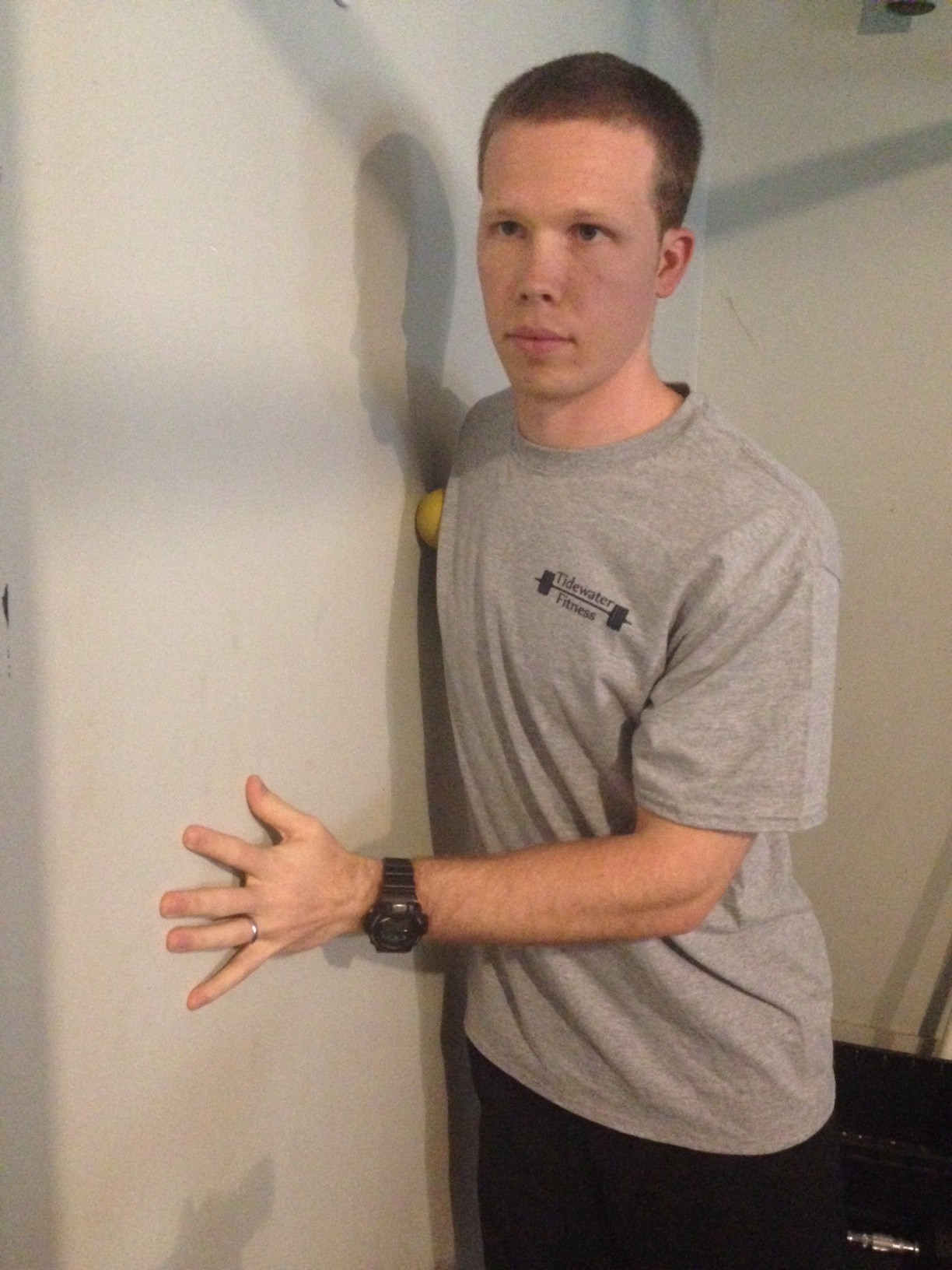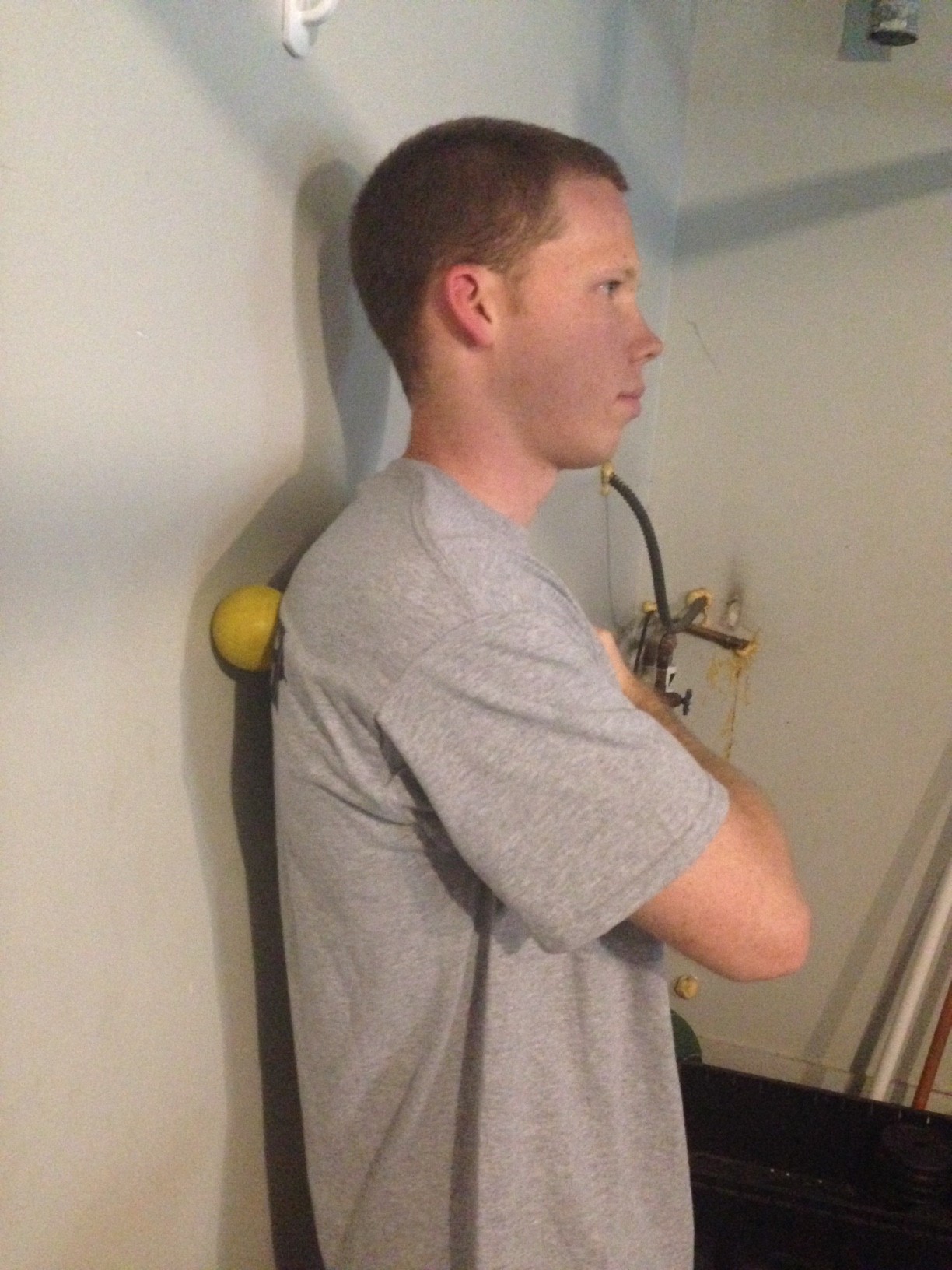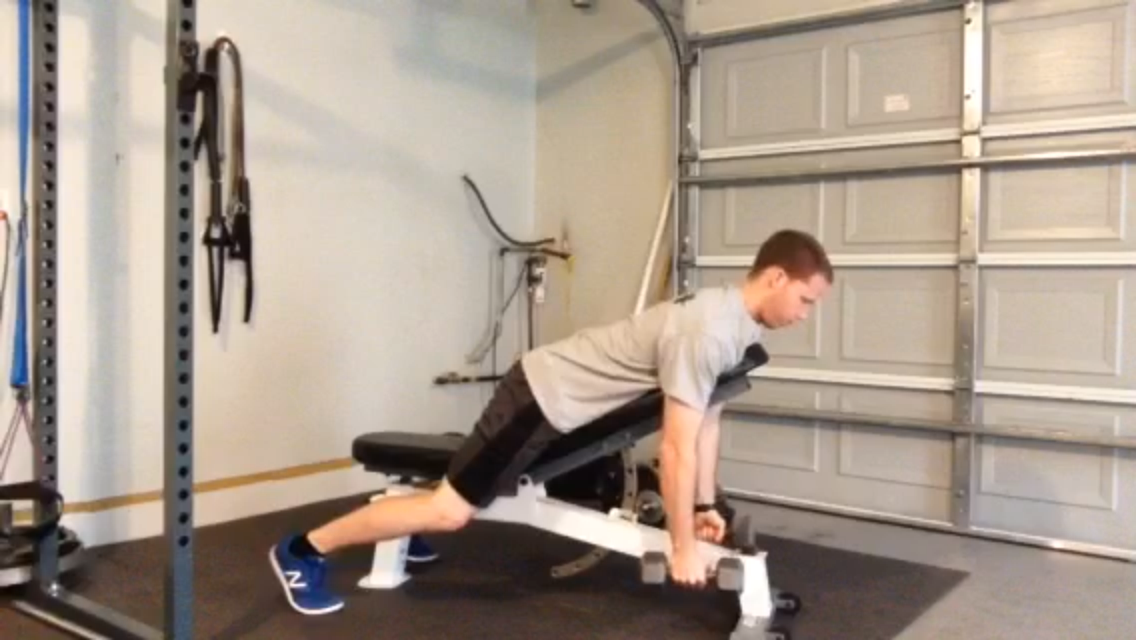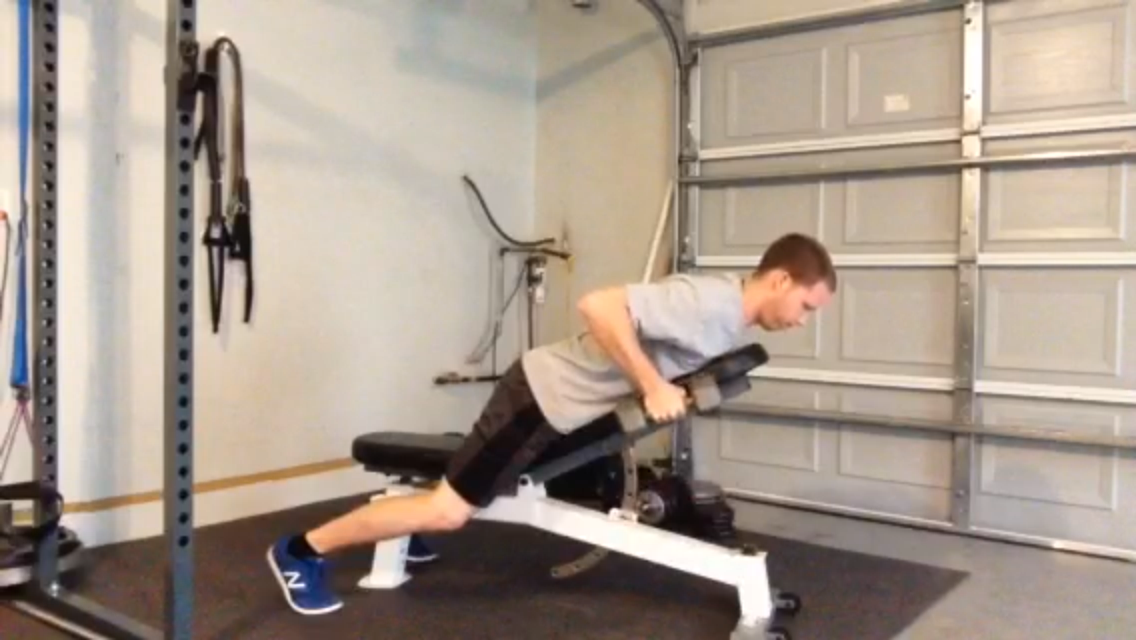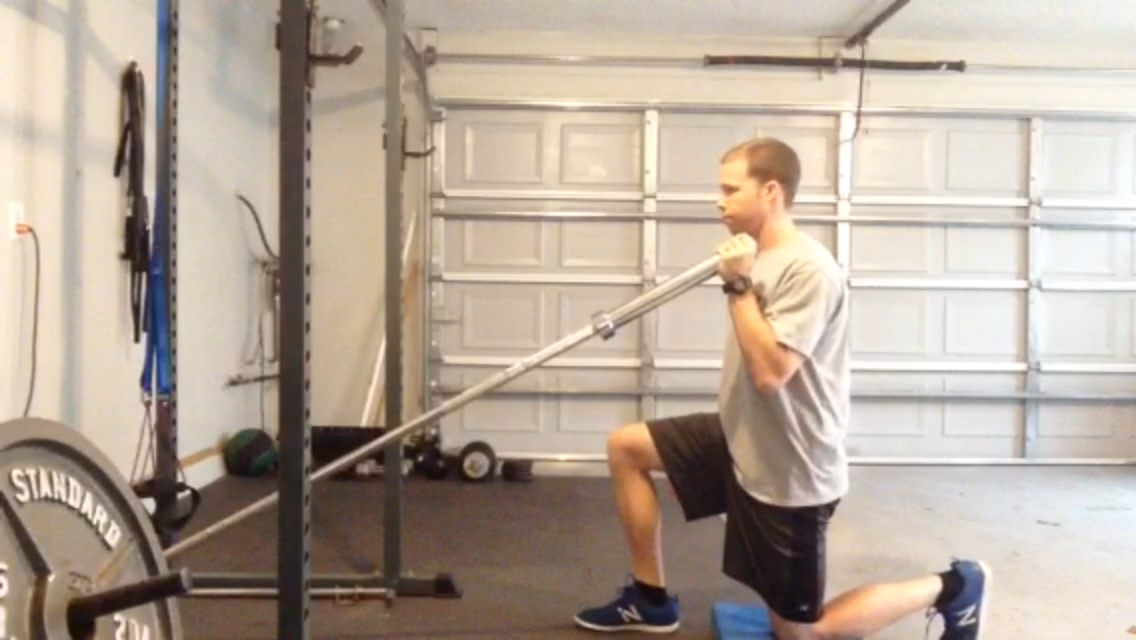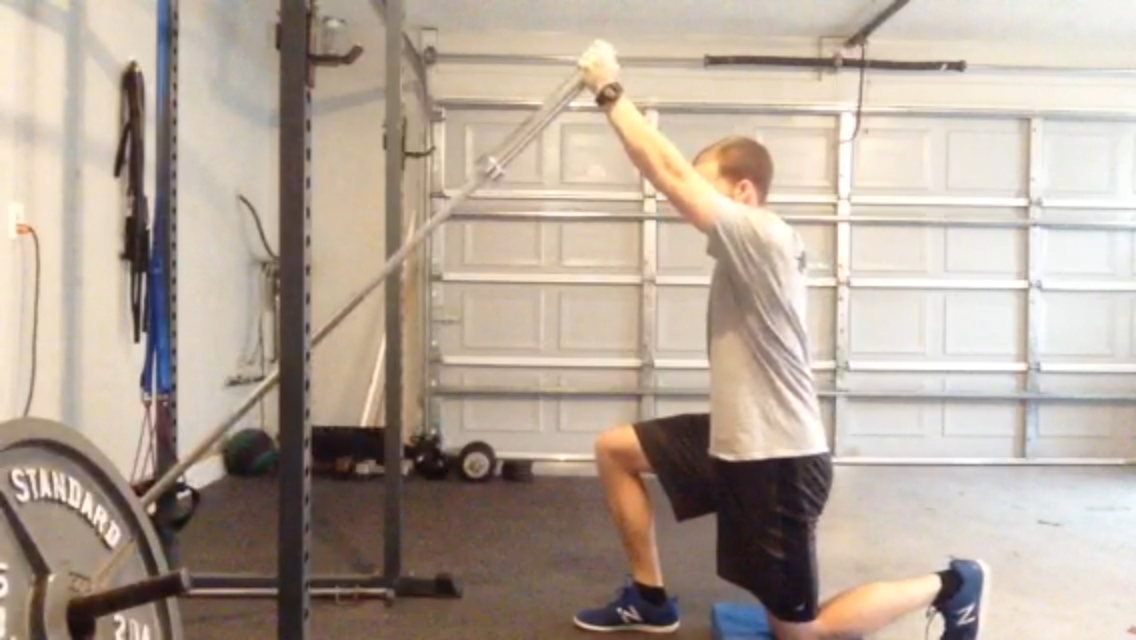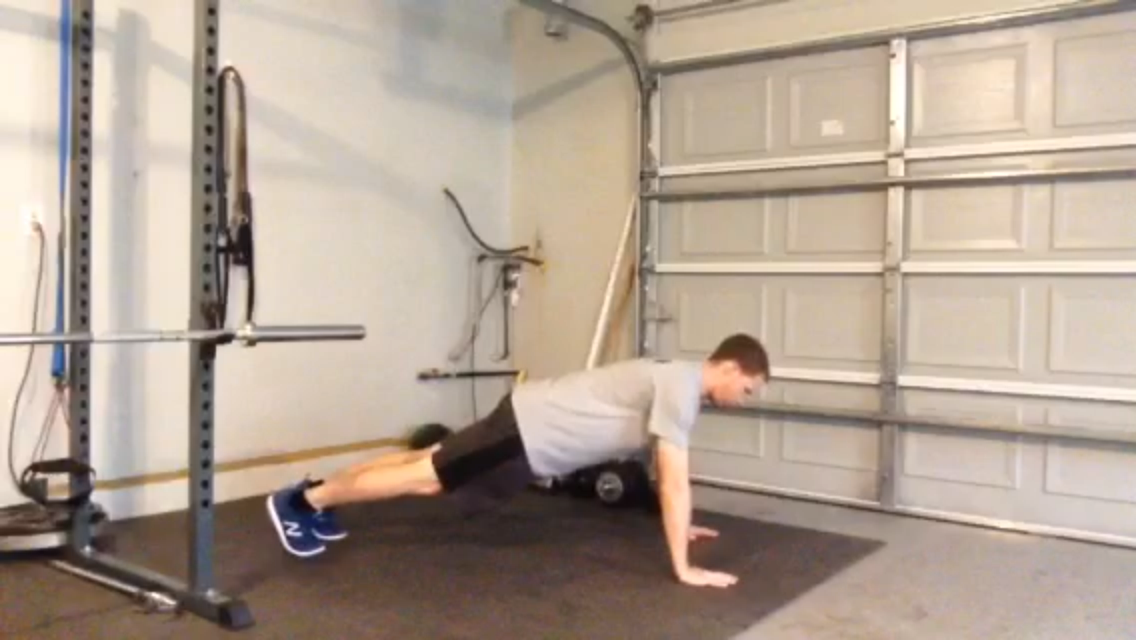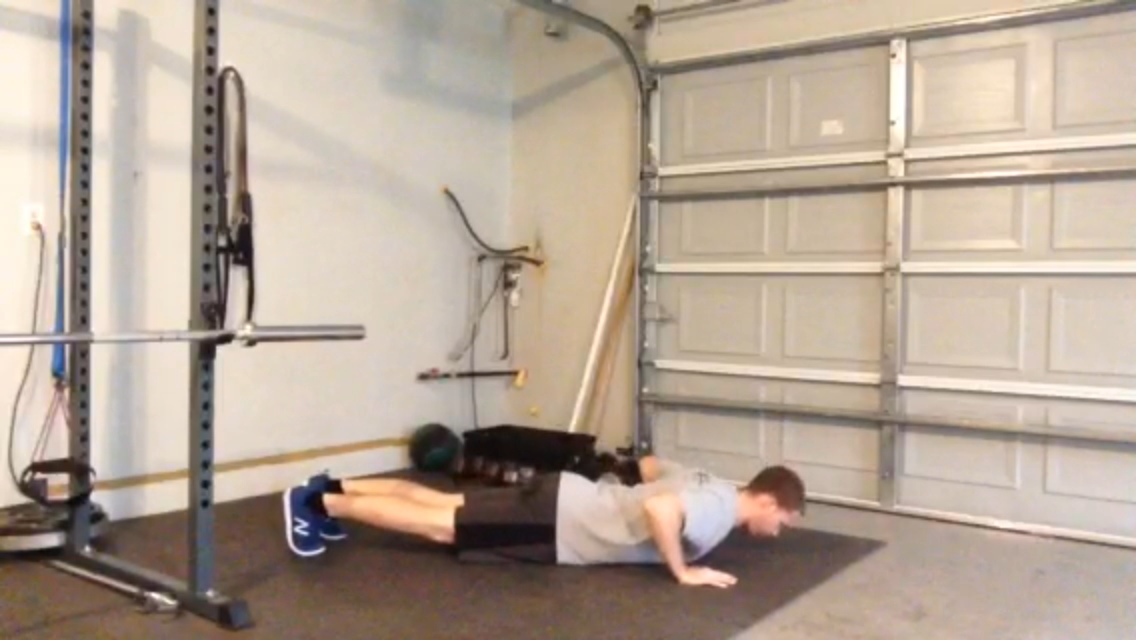The shoulder complex is comprised of several different joints. The glenohumeral joint, or what most people think of as the “shoulder” is one of the primary components. This joint has two main players, the humerus and the glenoid fossa.
The head of the humerus is larger than the glenoid, which it sits on top of. This makes for a very shallow joint. It is sometimes compared to a golf ball sitting on a tee.
Another adjacent joint that is involved in proper shoulder function is the scapulothoracic joint. This joint is comprised of the the shoulder blade (scapula), the rib cage, and the thoracic spine. Each time you move your glenohumeral joint, this joint must move as well to create smooth, pain-free movement.
There are a lot of moving parts within the shoulder complex. This makes it easy to become dysfunctional. If even one part of the complex doesn’t move correctly, it can throw everything out of whack. This can often lead to pain, discomfort, and weakness.
Because of the complexity and the range of motion the shoulder has, there are many different dysfunctional positions that could present. However, for the purpose of this article I want to highlight two of the more common ones.
In today’s society, a lot of our jobs involve sitting for 4-8 hours every day. This doesn’t do much to help our posture. Many office workers, truck drivers, teachers, etc. have a kypotic or rounded upper back.
In this position, the pec minor is often tight, which can tilt the shoulder blade forward and out of alignment. This leaves muscles like the mid and lower traps and serratus anterior in a weakened state.
On the other hand, some (especially athletes and weight lifters) are usually stuck in more of a lordodic or arched posture. In this type of posture, the rhomboids and traps are very tight, which pulls the shoulder blades back and down.
Both of these shoulder positions, are usually the result of being in this posture all the time. The body gets used to it. An individual with a misaligned shoulder complex may not be experiencing any pain or discomfort now, but it could be coming down the road.
But the good news is your posture and shoulder function can be improved. Here are three steps to better shoulder health.
1. Foam roll
This can be done with a foam roller or small ball like a tennis or lacrosse ball. Foam rolling is basically like a cheap massage. When muscles are overactive, they can develop knots, commonly referred to as trigger points.
These are those really painful areas you feel in your muscles. Applying direct pressure and compression with a foam roller or ball can aid in breaking up these adhesions over time. When trigger points are released it can help the body move properly and pain free.
To foam roll correctly, all you need to do is apply pressure to a specific muscle for 20-30 seconds at a time. Once you find a knot within the muscle, try rolling over it. You can go up and down, or side to side. These movements help in relieving tension.
Now, let’s talk about what muscles to foam roll depending on which posture you are in.
If you have a more kyphotic or rounded back posture focus on the pec minor. Place the ball directly above your arm pit against a wall. Push into the wall so you can apply pressure to the muscle. Roll each side for 20-30 seconds.
If you are stuck in more of a lordotic posture, focus on the rhomboids and mid traps. Place the ball on the inside on the shoulder blade. Focus on rolling horizontally and vertically for 20-30 seconds. Pulling the arm across the body can help in positioning the shoulder blade flat against the rib cage. This will make rolling a little more comfortable.
2. Mobility/Alignment
Mobility work is going to be important for the kyphotic posture. In this position, the shoulders are pulled forward and the chest is closed off. The focus needs to be on opening the chest up while moving the shoulder and thoracic spine through extension and rotation.
The rib roll is a great place to start. Lie on your side with a pad under your head and a foam roller under your top leg. If you do not have these things you could use a towel or ball of some sort. Anything will work.
Once in position, grab the bottom part of the rib cage and rotate your top shoulder and head towards the floor behind you. In this position, take 8-10 breaths. With each exhale, try to rotate the shoulder and head a little closer to the floor.
For the lordotic posture, it will be important to focus on proper alignment of the scapula and thoracic flexion. You want to drive the shoulders forward while allowing the shoulder blade to wrap around the rib cage (protract).
The rock back on elbows with breathing is a fantastic exercise to do this. You will begin in a quadruped position, then rock back until you are sitting on your heels. Once in this position, you will push your elbows into the floor and drive your upper body away from the floor.
This action protracts the shoulder blade and flexes the upper back. From here, all you need to do is breathe. Breathing in this manner, will help to push air to the backside of your body creating expansion. This is exactly what you want since the shoulder blades are compressed together. Perform this exercise for 10 breathes.
You will also notice, I have a bar pad between my thighs and abdomen. You can use a rolled up towel or pillow if you do not have a pad. It essentially provides feedback that you are breathing correctly and aids in pushing air to the backside.
 3. Strengthen
3. Strengthen
Exercises that strengthen the weakened muscles will help in restoring proper position and function.
For the kyphotic posture, you want to focus on rowing exercises and exercises that tilt the scapula backward or posteriorly. These exercises strengthen the traps, while stretching the pec minor. They also move the thoracic spine through extension and rotation, which is important, as I mentioned above. Two great exercises are the batwing row and the prone trap raise on incline.
For the batwing row, lie face down on an inclined bench with a dumbbell in each hand. Pull the dumbbells toward your body and stop once your elbow is in line with your shoulder. You should feel this in your upper back. Perform 8-12 reps.
For the prone trap raise on incline, you will also lie face down on an inclined bench. From here, bring your hands up in the shape of a Y. You should feel this slightly below the shoulder blade. Perform this exercise for 12-15 reps.
With the lordotic posture, the shoulder blades are already pulled back and down. So, the focus needs to be on allowing the shoulder blade to move forward and up. This can be accomplished with a couple pressing exercises.
With most exercises that involve pressing, the individual is lying on a bench. This puts the shoulder blade in bad position because it is essentially pinned down. The shoulder blade needs to be able to protract and upwardly rotate. This will help strengthen the serratus anterior and upper and lower traps.
Two exercises that can accomplish this are the half kneeling one arm landmine press and the push up.
In the half kneeling one arm landmine press, set up in a half kneeling position with a pad or mat under the back knee. The barbell will be against a wall. With the barbell in one hand, press up at about a 60-75 degree angle. Perform for 8-12 reps on each side.
The push up is a great exercise that allows the shoulder to properly protract. Set up in a normal push up position with the wrist under the shoulders. Slightly tuck the hips under the body to reduce the lordotic posture. From here, lower your body to the ground without the letting the hips sag.
Push yourself back to the top. When you do this, focus on pushing away from the floor as far as possible. You should feel your shoulder blades moving around your rib cage when you do this properly. Perform for 8-12 reps.
Conclusion
Shoulder dysfunction is very common. The shoulder joint is one of the most unstable in the body making it prone to injury or misalignment. What we do on a daily basis is the driving force behind our posture and alignment.
With these simple steps, you can prevent pain or dysfunction before it occurs. Use them and you will be amazed at how much better your shoulders feel.
Photo credit:
1. http://www.sportsarthroscopy.com/patient-education/patient-guides/shoulder-cartilage/
2. https://meded.ucsd.edu/clinicalmed/joints2.htm
3. http://eurekaosteo.com.au/newsroom/blog
4. http://brentbrookbush.com/the-link-between-kyphosis-and-subacromial-impingement-syndrome/
5. http://neurokinetictherapy.com/the-pectoralis-minor-king-of-compensation
6. http://mycerebellarstrokerecovery.com/2013/07/16/scapular-winging/
7. http://www.reddit.com/comments/encux/lordosis_bad_lumbar_curvature_exercises_to_correct/
8. http://becomethebull.blogspot.com/2010/06/stand-up.html
